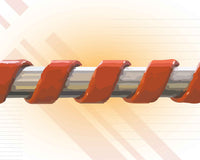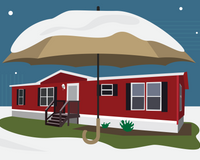This article originally appeared on Mobile Home Living on July 23rd, 2016 by Crystal Adkins.
So, you’ve decided to go for the more budget-friendly version of life and you’re ready to buy your first used mobile home. You have figured out where you’re going to put it or you’ve decided to live in a park, you know how much you can spend and what you want in it.
Now, the only thing left to do is actually find and buy the home!
One of the hardest parts of mobile home living is choosing the best home for you and your family from all the great choices in today’s market.
Don’t limit your options, look at as many different choices as you can. Search Craigslist, local trading papers, newspaper classifieds, local real estate channels, internet classifieds or even Ebay. The more choices you have the better chance of finding the perfect fit for your lifestyle. There have been hundreds of different models and layouts designed throughout the years, some will work for you and some won’t.
Buying a Mobile Home: First Impressions Count
First impressions will be one of your most powerful tools when buying a mobile home. You can tell if the home and the property have been well cared for and maintained. If you see that it hasn’t been cared for you need to be extra cautious. Unless you plan to completely gut a home and re-new it you’ve got to ensure you buy a sturdy and safe home while getting the most bang for your buck.
Inspecting the Mobile Home
You have to to know, at the very least, the basics to make a good mobile home purchasing decision. Here are a few things to look for when inspecting a possible home:
Will it pass all necessary codes?
There’s plenty of different codes that may have to be passed depending on your location. Transportation, structural, electrical, plumbing, foundation, and several others may have to be permitted for or inspected on.
- New Wiring: If the home is older than 1976, it should have already been rewired and a new breaker box put in place. If not, you will need to rewire the home. HUD standards did not take effect until mid-1976, and those old aluminum wires are not safe. If the home is newer than 1976, check out the breaker box for ample, organized circuitry and check all the wall switches. They should all work, and GFCI switches should be utilized at all water sources.
- Water Leaks: Look under every water source, look above and around windows and doors. Water will always be a mobile home's worst enemy.
Does it have sagging floors or ceilings?
Sagging screams out that something isn’t right, usually that the home is un-level or that water has damaged the material and caused rot.
How’s the plumbing?
Look for leaks at all water sources. Look at the water heater and the floor under it for leaks. Flush the toilets while running water in the sink, and look for pressure loss. Look under the sinks and also the home to see if anything is leaking. Bathroom floors are the most commonly damaged and replaced areas. Some manufactured homes even had carpet in the bathrooms, an unsanitary practice indeed.
Do the doors and windows open and close properly?
If the kitchen cabinets or interior doors won’t stay closed (or opened) without help you may be in an unlevel home. A mobile home that is not sitting properly will put stress on the home and ultimately destroy it.
What’s it look like under the home?
By looking for certain issues under the home you can save yourself a lot of issues in the future. Look at all the piers (usually cinder block) that the homes beams sit on. Every pier should be holding beam. If you see space between the beam and the top of the pier, the home could be stressed and compromised. While your there look for consistent plastic sheeting, no tears or holes.
If the roof was not properly cared for, the home will suffer immensely. Each type of roof has its issues to look for. Flat roofs need sealing on a regular schedule to remain effective. If you end up purchasing a flat-roofed home, you will need to seal it immediately after the move. The trip will have caused the sealant to break bond. Metal roofing should be dent-free and trimmed properly. All seams should be water-tight, and sealant used around all cuts. Shingled roofs require re-roofing eventually. Check that all shingles are in place and all angles and cuts are water-tight. What’s the roof look like?
Even more considerations.
There’s a lot more to consider than just what's on this list. Buying a used manufactured home is a big decision. To effectively use your purchasing power, you should research as much as possible from several different sources. A post we wrote, “15 Tips For Buying A New Manufactured Home,” has some good points for both new and used home purchases.
With careful inspection and proper research, you can be guaranteed a solid and affordable home that meets your needs.
Living in a used manufactured home is a great way to save money and still live comfortably and stylishly. Making a great foundation to your future dream home or to peruse only as a temporary shelter, an older manufactured home is a great choice for anyone under any circumstance.






